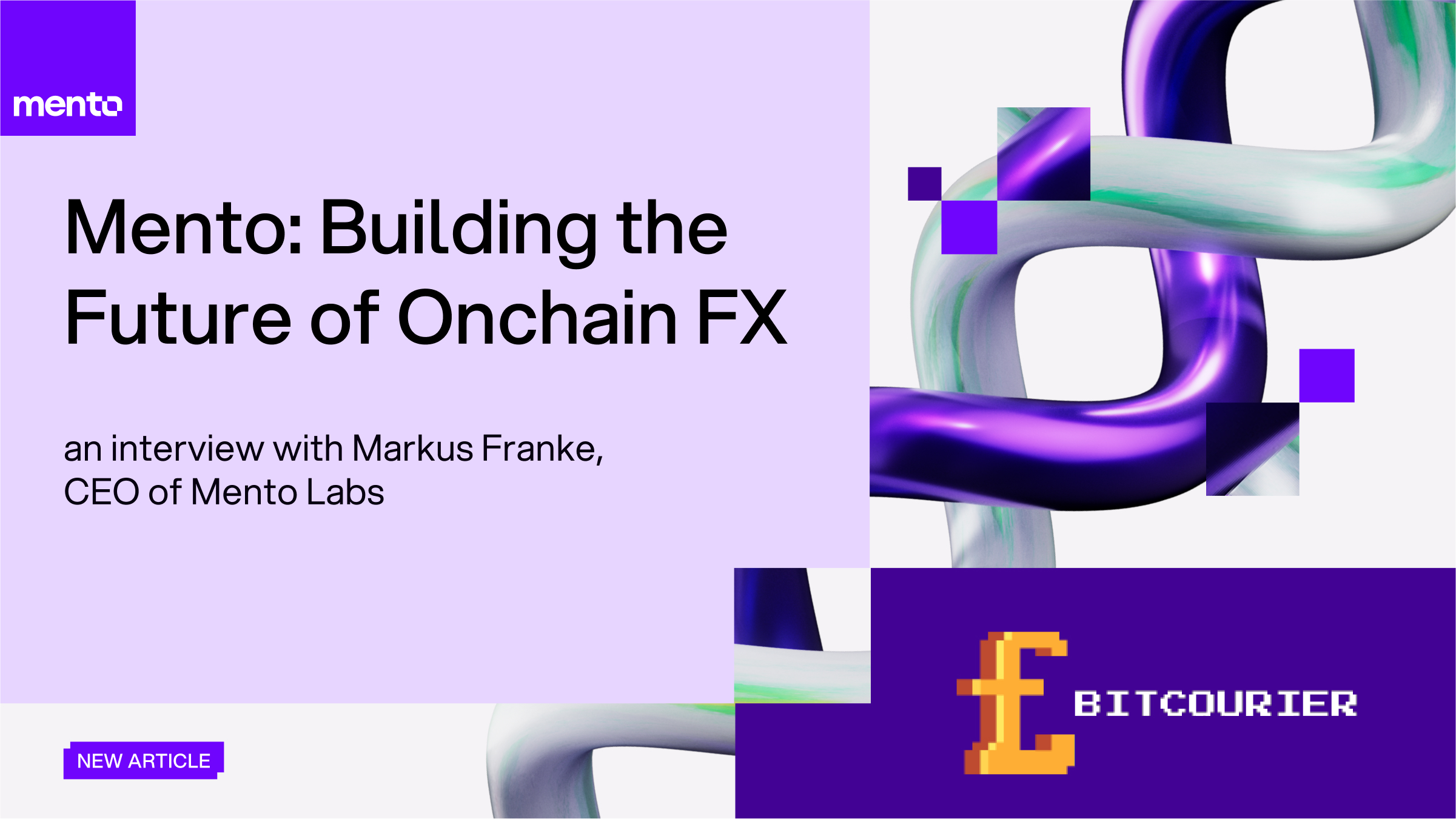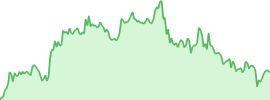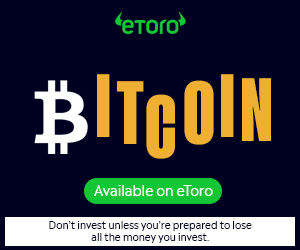
Markus Franke is CEO of Mento Labs, the development team behind the Mento Platform. Markus is an economist who has been working for over 20 years at the intersection of economics, finance and technology: in traditional finance (J.P. Morgan, Merrill Lynch, Allianz), as a post-doc researcher (Ludwig-Maximilians-Universität, Columbia Business School, HKUST), and in the Web3 ecosystem (co-creator of Celo, Board Member of cLabs, Chief Economist at Celo Foundation). Markus holds a PhD in economics and is an advisor to many projects in the blockchain space.
Chris: Mento is one of the most active decentralized stablecoin platforms today. Can you walk us through some of the key milestones, and how they shaped where the platform is headed now?
Markus: Over the last two years, Mento has grown from a protocol supporting a few local currency stablecoins into one of the most active decentralized onchain FX platforms. Mento has introduced over 10 stablecoins, including cKES, cCOP, cGHS, and PUSO across Africa, LATAM, and Southeast Asia, and gives users access to an expanded range of currency pairs, including several of the world’s top 10 most traded.
We’ve seen Mento stablecoins used for cross-border payments, remittances, mobile money transactions, microloans, savings and earning yield. From local business owners in Kenya getting microloans in cKES, to users in Latin America using cCOP for daily payments, Mento stablecoins are serving real financial needs.
In 2024 alone, Mento stablecoins processed over 550 million transactions across more than 5 million users, and became the second most-used decentralized stablecoin platform worldwide.
There’s real demand for accessible digital currency infrastructure across both emerging and developed markets. That momentum naturally led our team to the next phase of Mento: taking everything we’ve built with local currency stablecoins and evolving it into the foundation for a global, onchain FX network.
Chris: Can you share what this strategic shift means for the platform and its users?
Markus: Absolutely. While Mento began as a protocol for decentralized stablecoins, we are now doubling down on a broader mission of becoming the core infrastructure for onchain FX. The traditional FX market moves over $7.5 trillion daily, and there is no reason why that kind of volume should not exist onchain. Mento is building the rails to bring that scale of currency exchange onchain and provide decentralized liquidity for a growing range of currencies, empowering both retail and institutional users to trade, hedge, settle, and access credit in their local currencies or globally used assets. This shift builds on our strong foundation in emerging markets, and positions Mento as a scalable FX engine across multiple chains.
Chris: Why did you choose to build Mento on the Celo blockchain specifically, and what role does its mobile-first design play in your broader strategy?
Markus: Celo launched in 2020 as a mobile-first blockchain focused on financial inclusion, with built-in support for decentralized stablecoins like cUSD. Celo has increasingly evolved into a prime ecosystem for stablecoins. Mento began as the stability protocol behind these decentralized stablecoins and spun out as an independent project in 2022. Celo’s lightweight, phone-compatible architecture enables Mento to deliver accessible, low-cost stablecoins to its users. This mobile-first focus is key to Mento’s strategy of reaching billions through everyday smartphone use. Now that Celo is a L2 on Ethereum, Mento is the leading FX infra in the EVM world.
Chris: The stability mechanism behind Mento is powered by open-source smart contracts. Can you elaborate on the transparency measures in place to assure users and regulators of fairness and stability?
Markus: Mento ensures transparency through open-source smart contracts, decentralized onchain governance, and real-time dashboards in the Mento Reserve showing collateral and stablecoin data. Mento regularly undergoes third-party audits and maintains overcollateralized reserves to ensure fairness and stability. Every user can verify the assets in the Mento Reserve and how the stability mechanism works. So transparency is an important part of Mento.
Chris: How important is EVM compatibility in Mento’s roadmap, and are there plans to bring Mento stablecoins to other blockchains like Base, Optimism, or even non-EVM chains like Solana or Cosmos?
Markus: Since Mento is EVM compatible it can easily be integrated with a wide range of DeFi apps and chains that support the Ethereum Virtual Machine, like Base, Optimism, and Arbitrum. This compatibility makes it faster and cheaper to expand Mento stablecoins across ecosystems.
Through Mento governance, the Mento Community can vote to decide on Mento’s multichain strategy, including potential expansion to non-EVM chains. We need to meet users where they are, whether that’s on Solana, Cosmos, or chains that have not launched yet. Our vision is a world where currencies flow as freely as information does today, and building that unified, onchain FX layer is how we get there. We encourage users to join the Mento Community and actively participate in Mento governance to shape the future of the Mento Platform.
Chris: If we fast-forward 5 years, what would a successful “Mento-powered” ecosystem look like across emerging markets? How would the average person’s financial life be different?
Markus: 5 years from now, a part of the largest market of the world, the FOREX market, will have moved onchain. Frictions of the FOREX market, like high barriers to entry, fragmented liquidity, operational overhead, long settlement times and the lack of 24/7 markets, will have been removed by Mento, and the platform makes it safe and cost-efficient for anyone to trade or issue pegged assets. Mento, not only 5 years from now, but this year, will have bridged the gap between DeFi’s flexibility and the deep liquidity of global off-chain markets for pairs for which onchain price discovery is not required.





 usdt
usdt bnb
bnb

